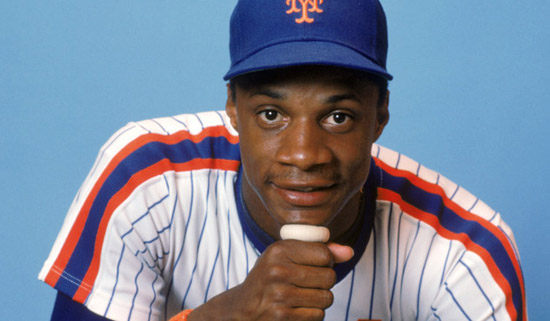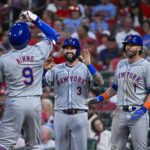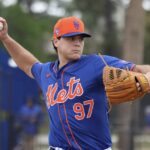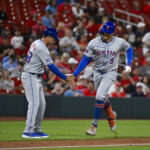
This was three years in the making. No player in Mets history had more hype surrounding him than Darryl Strawberry. He went 0-for-4 with three strikeouts, two walks, and a stolen base in a 13-inning victory on a Friday night. But the mere fact that the team’s proclaimed savior was officially on a major league diamond was worth celebrating.
Even still, the debuts of hot prospects don’t engender the same kind of reaction as they do now — especially in terms of attendance. About 16,000 were on-hand at Shea Stadium that evening. The Mets were in last place and the Cincinnati Reds were on their way, but Strawberry was expected to help his team finally escape the cellar soon.
The paucity of talent on New York’s roster was evident as Darryl was slotted into the No. 3 spot in the batting order and the starter in right field. He struck out in the first against Cincinnati starter Mario Soto, hit a foul popup in the fourth, fanned in the seventh, and K’d in the ninth as the tying run.
He was given the opportunity for more plate appearances when the Mets came back from a 3-0 deficit. Tom Seaver allowed those runs to his former team and left after eight trailing by two. But Dave Kingman came up after Strawberry’s fourth strikeout and launched a two-run homer into the sky.
After both teams traded runs in the 10th, Darryl re-appeared at the plate in the 11th and drew a walk to put runners on first and second. The Mets were unable to push across the game-winner, but did so two innings later.
With two outs, Strawberry kept the bottom of the 13th going when he drew another free pass. He quickly stole second and came around the bases as George Foster delivered a three-run walk-off homer.
Darryl’s entrance into the majors was slow, but he’d eventually figure it out and begin to fulfill those enormous expectations. Starting on June 7, Darryl fashioned an OPS of .936, topping the figure of NL MVP Dale Murphy. His power took a significant upturn in the second half as he hammered 19 homers and drove in 51 runs. By September, the glimpses of his potential were now on full display.
In the final month, he exhibited terrific plate discipline by batting .376 and hitting successfully in 20 of 24 games. In 122 games, he had a 134 OPS+ and 19 stolen bases. His final totals of 26 homers and 76 RBIs stood as Mets rookie records until 2019 and he became the third in team history and became the third Met to take the National League Rookie of the Year honors, joining Seaver (1967) and Jon Matlack (1972).















